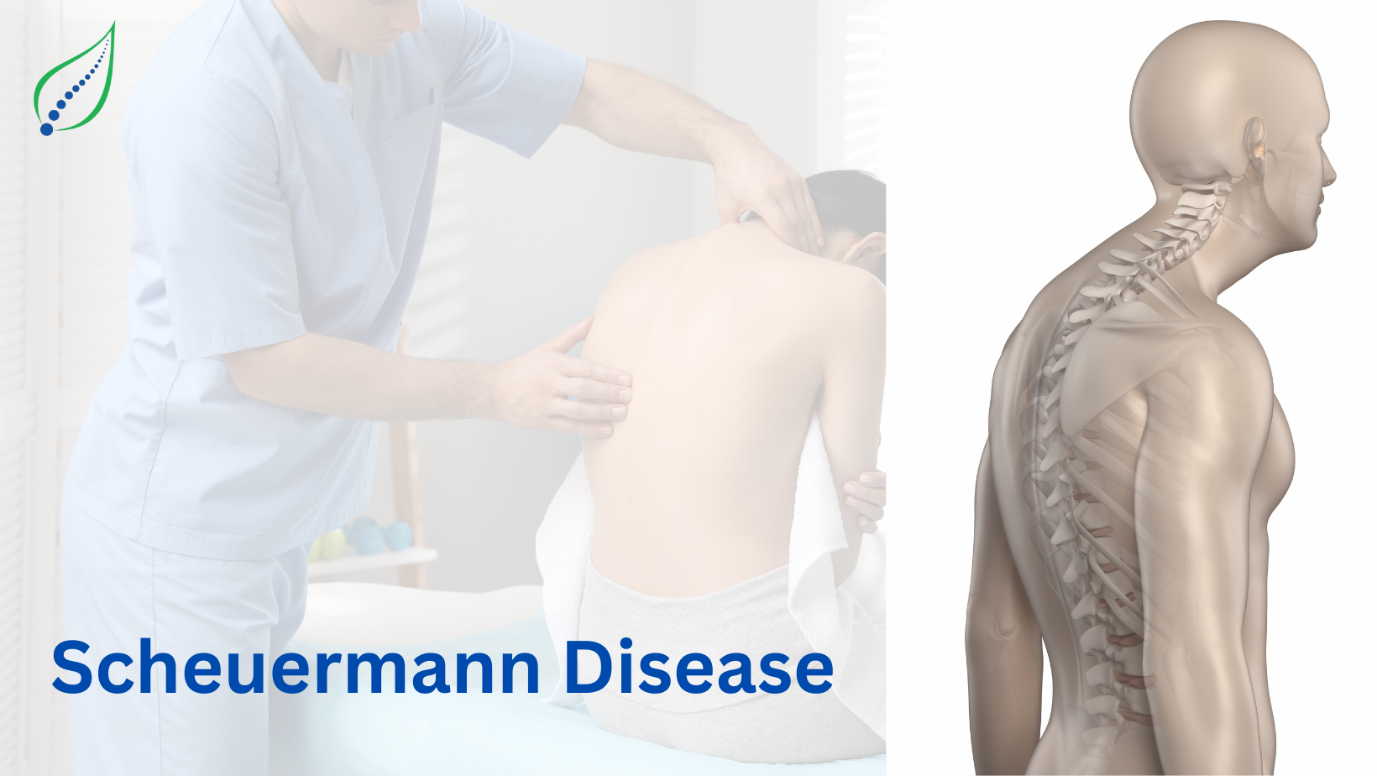Scheuermann Disease
Scheuermann disease also known as Scheuermann kyphosis or juvenile kyphosis. This is condition of hyperkyphosis that involves the vertebral bodies and discs of the spine. The kyphosis of the thoracic region will be around 45 to 75 degrees. There is a vertebral wedging greater than five degrees of 3 or more adjacent vertebrae. The hyperkyphosis can be compensated by a lumbar and cervical hyper lordosis.
It is most commonly seen in adolescents of 15 to 17 years & after they notice a postural deformity or “hunchbacked” on upper back area.
There are two major types of Scheuermann disease:
- The thoracic curve is most common affected an apex between T7-T9 vertebrae.
- The thoracolumbar curve can occur with an apex between T10-T12 vertebrae and is more likely to continue into adulthood.
PATHOPHYSIOLOGY:
Pathophysiology relating to Scheuermann kyphosis is still undetermined. This is genetic inheritance results in discordant vertebral endplate mineralization and ossification during growth. It is causing disproportional vertebral body growth with the resultant classic wedge-shaped vertebral bodies that lead to kyphosis. This disease includes thoracic spine hyperkyphosis as defined by the diagnostic criteria are irregular vertebral, Schmorl nodes, and loss of disc space height noted on sagittal imaging studies.
SYMPTOMS:
- May complain of thoracic or lumbar pain
- Cosmetic concern
- Deformity of back seen
INVESTIGATION:
X-ray- to look for deformity level on the vertebrae, disc spaces reduced etc.
MRI - It is indicated prior to look for associated disc herniation, epidural cyst, spinal cord abnormalities, and spinal stenosis will show vertebral wedging, dehydrated discs, and Schmorl's nodes. Any type of neurological symptom & deficit warrants evaluation with MRI.
Physical exam shows rigid hyperkyphosis curve with forward bending. The hyperkyphosis does not resolve with an extension or lying prone/supine, further supporting the “rigid” this is congenital deformity.
Other signs seen in:
- Vertebral endplate irregularity due to extensive disc invagination.
- Intervertebral disc space narrowing, more pronounced anteriorly.
TREATMENT:
- Lifestyle modification.
- Physical therapy.
- Focussing on stretching the tight pectorals & strengthening the weak. rhomboids, traps, latismuss dorsi. Posture correction exercises and back extensor strengthening
- Core muscle strengthening for patients with spondylolysis
- Breathing exercises for chest expansion
- Flexibility exercises for hamstring contractures
- Bracing with an extension-type orthosis in order to delay progression of the deformity (Milwaukee, Boston brace)
- Sports are advised: such as gymnastics, aerobics, swimming, basketball, cycling and hyperextension exercises.
Muscle activation by increasing tension to achieve the correction, muscle balance, stabilization & increase the proprioceptive correction.

_1744793045.png)
_1743751136.png)
_1738219992.png)
